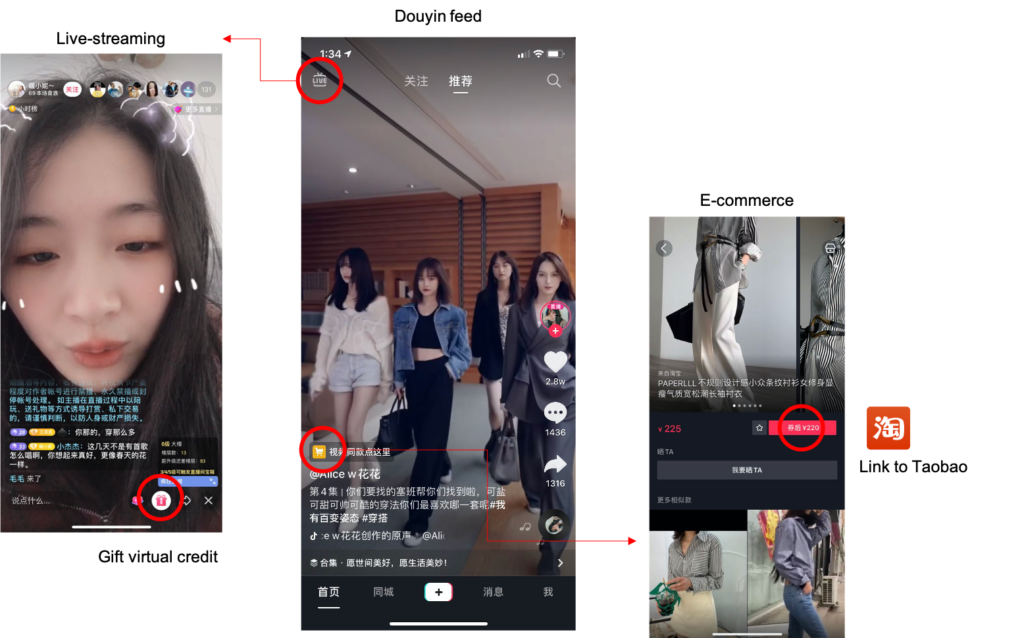Where did the last hour go? You notice you are scrolling through a feed again, with no memory of opening the app.
A cute puppy on Douyin grabbed your attention, bringing a burst of happiness so brief it’s addictive. Conveniently you swiped up to a bottomless feed of 15-second videos, from people (often attractive young females) eating/making food, doing passionate lip-syncs and comical dances, shopping, to holding some more puppies.
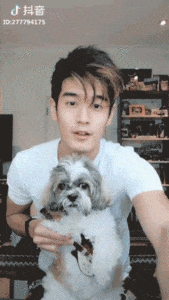
The Chinese mini-music-video social network combines funny and interesting short clips, an immersive full-screen interface and powerful AI for its sticky magic.
What is Douyin?
Douyin is a short-video App with powerful editing capabilities. It enables users to add music and effects to their videos in order to make them more interesting/creative.
Viral videos on Douyin could get 30-200 million views within one day. The most popular videos are often between 10 to 30 seconds long. Here are some of the most popular videos on Douyin:
Daoxiaodao Sama
4.1 billion video views, 5.6 million video engagement, grow over 1 million followers within 1 week. This is a typical viral video, 14 seconds long, a plot twist in the middle, and a great visual effect.
This fried chicken tutorial video received 187 million views within a day and over 5 million engagements. Pet video is also a popular category, this video received 53.5 million views in a day and over 3.5 million engagement accumulatively.
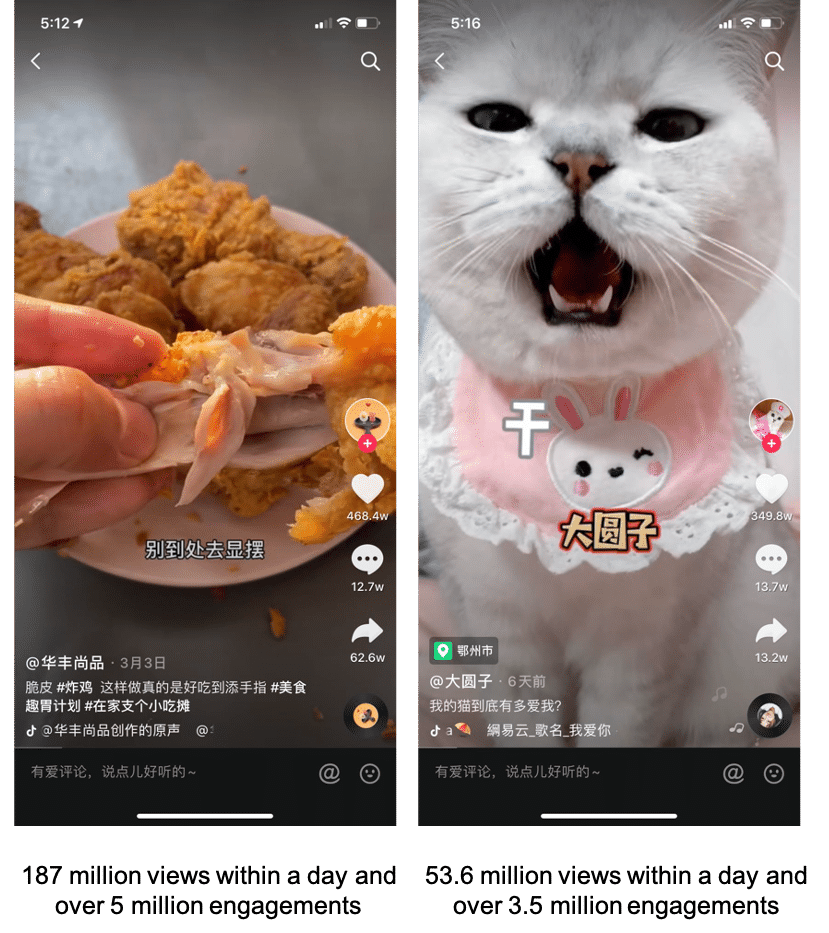
Douyin has a live-streaming section that can be accessed via the top left sign. Many brands use live-streaming to market and sell products.
Douyin supports videos leading to e-commerce platforms such as Taobao and Douyin store.
Who is watching?
Having grown to about 486 million monthly active users as of June 2019. It was also the most downloaded non-game iOS app in the world, beating such big names as YouTube, Instagram, Facebook, and WhatsApp in download charts.
Considering that Android users in China have to download the app from third-party stores (as Play is banned), Douyin (named Tik Tok overseas, where the platform has also expanded rapidly) has successfully established a strong international presence, especially in Asian countries like Thailand, Japan, Indonesia and Vietnam.
At home, Chinese youth love the fun and quirky content. Jiguang data shows that 43% of Douyin users live in first- and second-tier cities, the developed metropolitan areas.
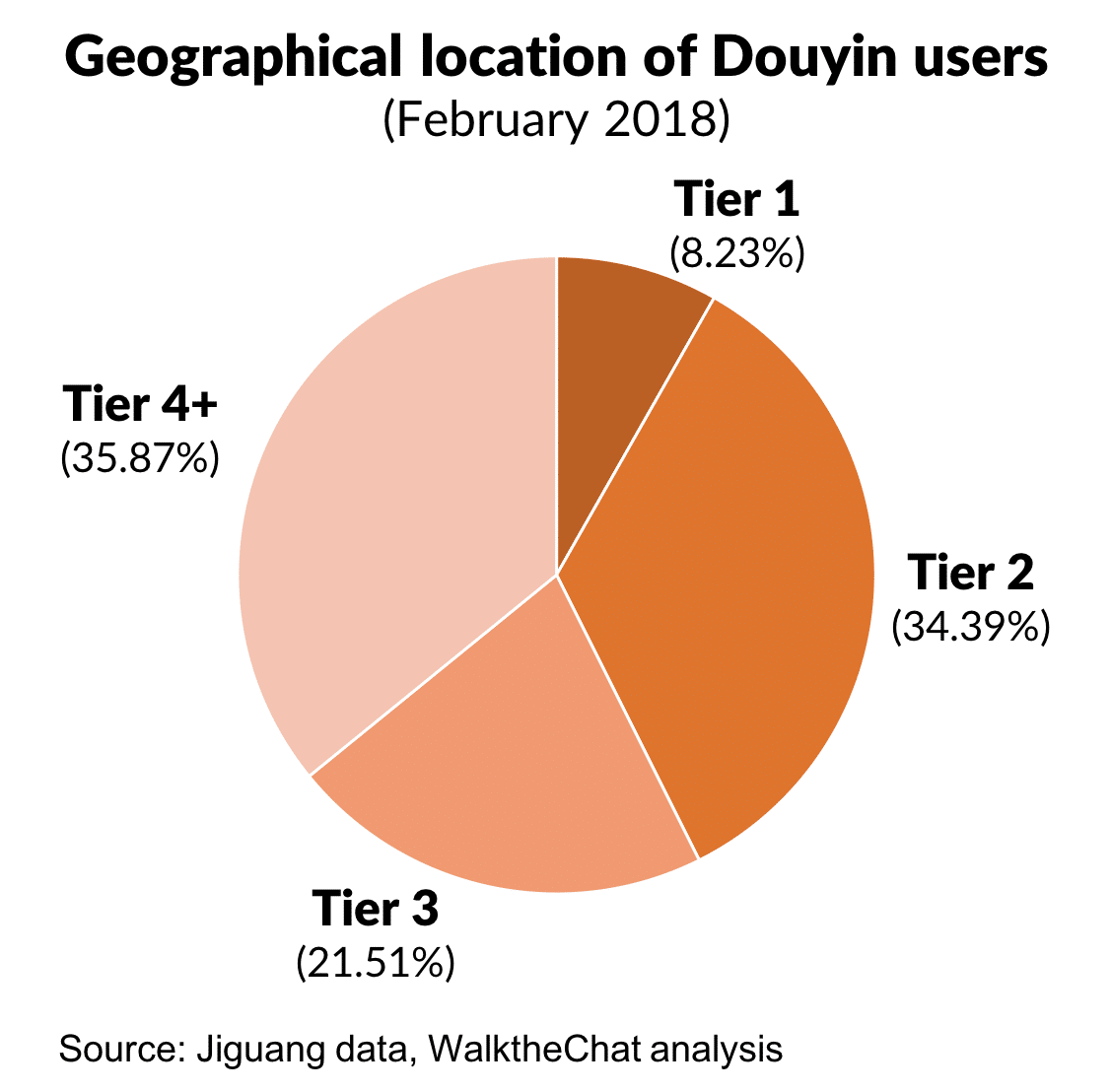
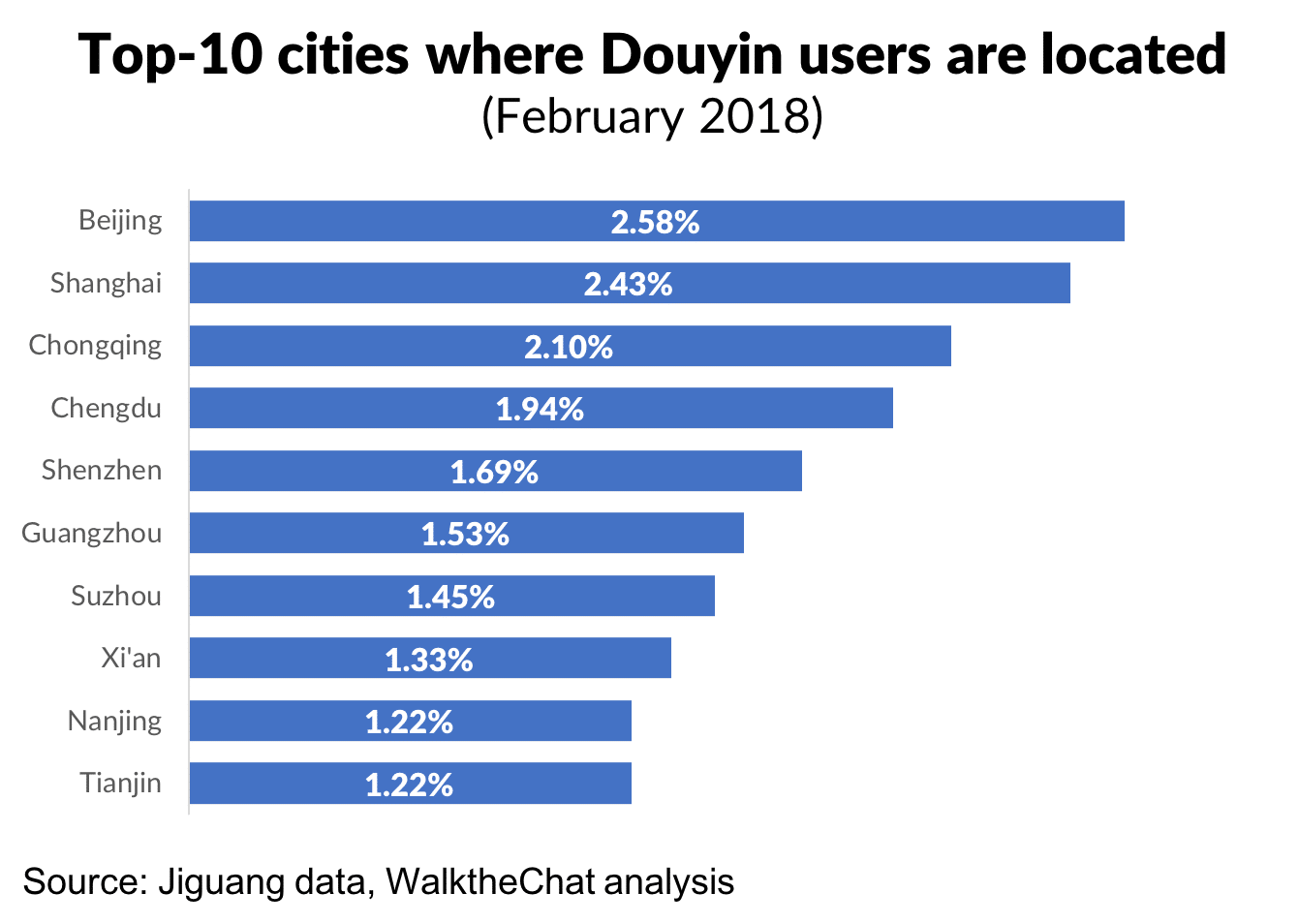
Douyin users are also remarkably young: often below 24 years old. The predominantly young and upscale audience makes Douyin an interesting platform for brands who are curious to tap into China’s Gen Z shopper set.
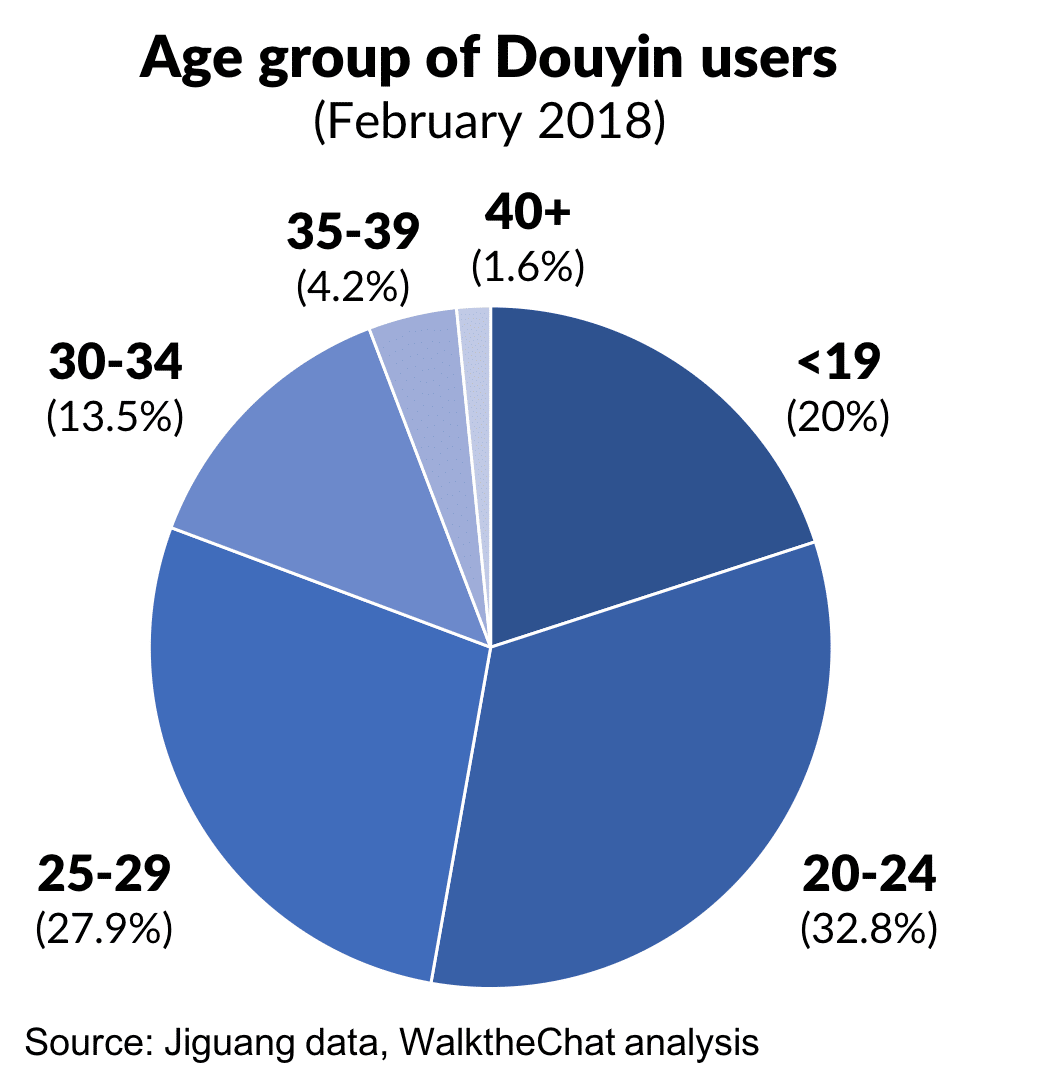
The predominantly female audience of Douyin is another appeal of the App for advertisers, eager to reach out to young and affluant female users.
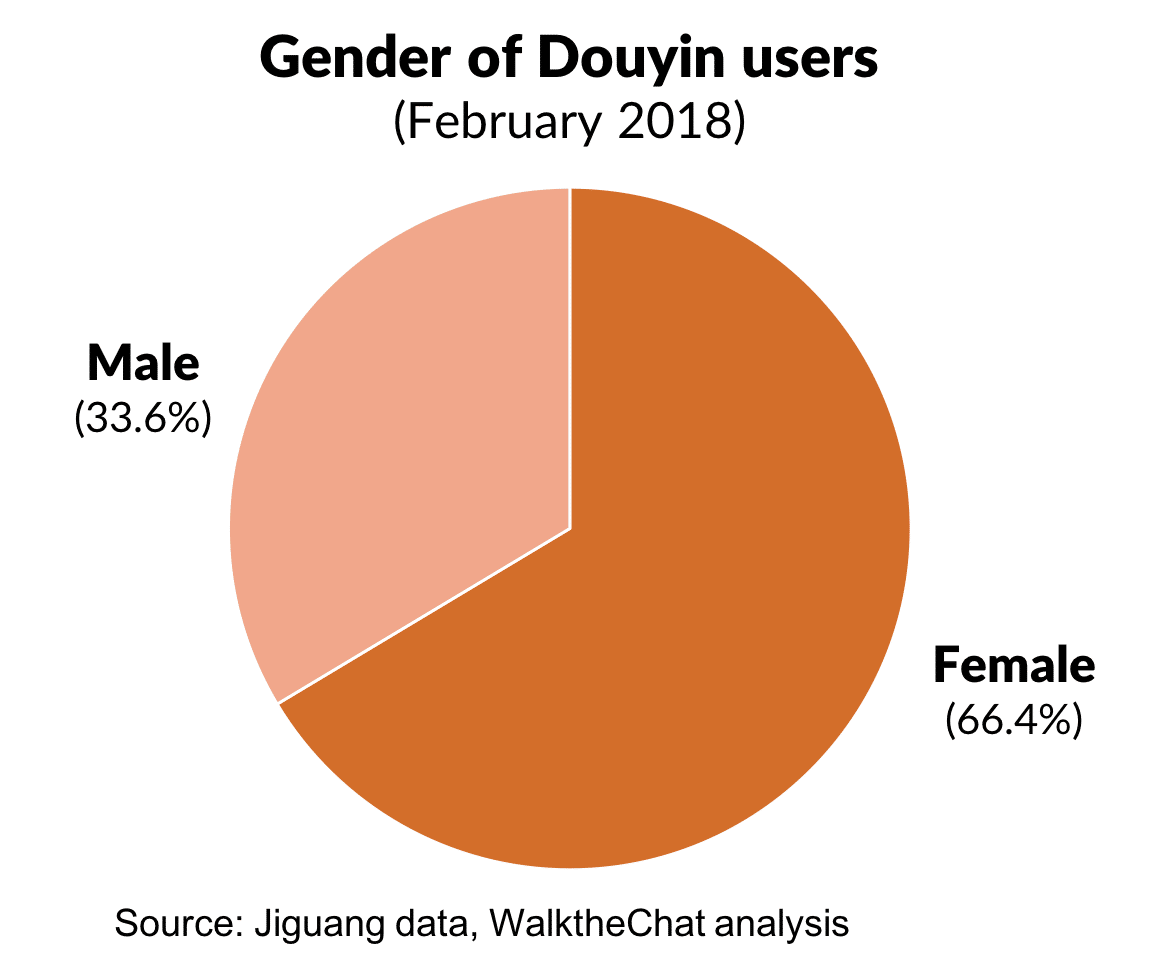
Douyin soared to 320 million daily active users within just 2 years. 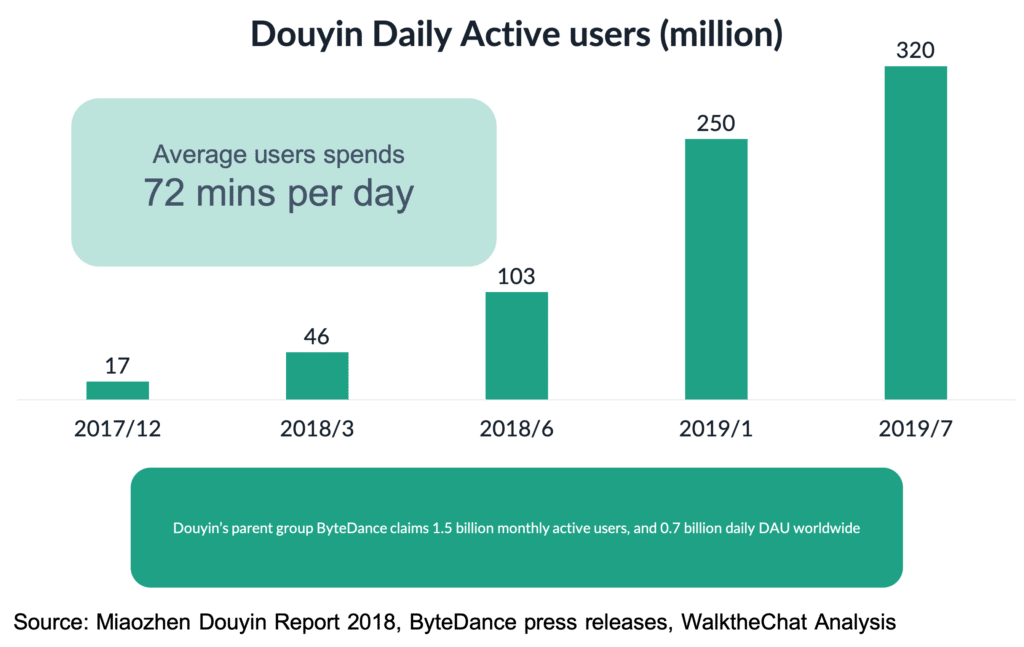 Douyin is quickly become the No. 1 biggest short video platform in China. Kuaishou (backed by Tencent) ranks No. 2.
Douyin is quickly become the No. 1 biggest short video platform in China. Kuaishou (backed by Tencent) ranks No. 2. 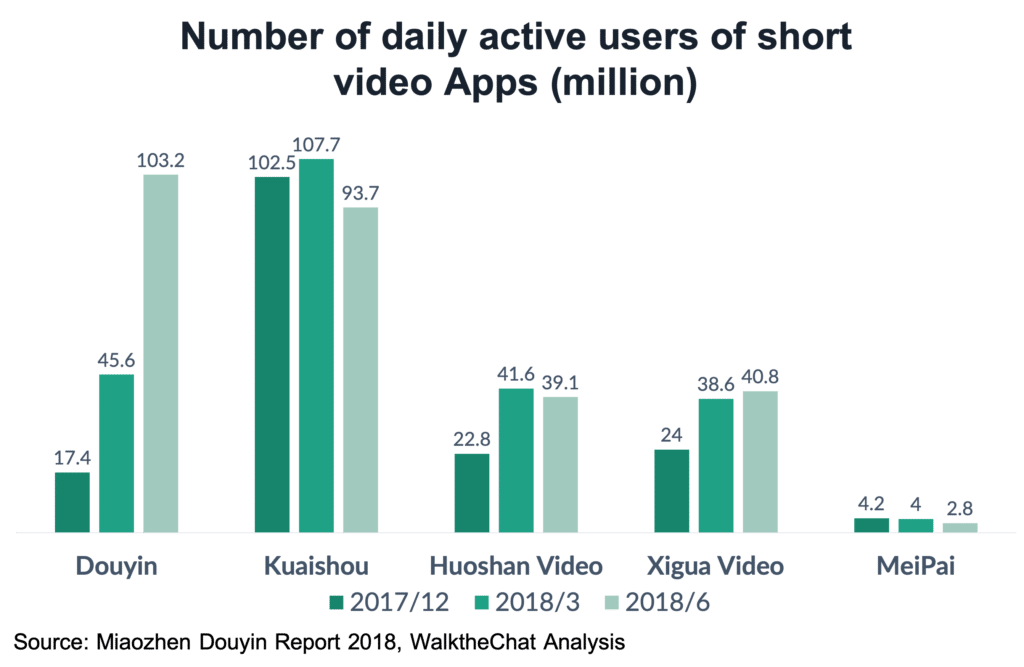
Sale products via Douyin
How does Douyin Store work?
As you might know already, Douyin is now the largest short-video platform in China. There are 2 ways users can get from a short video to e-commerce:
- By clicking an e-commerce link inside the video
- Once the video loops for the 2nd time, a larger banner will appear linking to a product
Linking to Taobao store is the most common way Douyin KOLs sells. Douyin signs a strategic agreement with Taobao. As part of the deal, Taobao agrees to invest in Douyin advertising, and Douyin instead will promote the link to Taobao store on a strategic level.
Douyin also has a native e-commerce system. You will be able to purchase directly within the Douyin App.
The native Douyin Store has the following advantage:
- Users won’t need to exit Douyin for making a purchase.
- The store could be linked to apps in the Bydance ecosystem, for example, Toutiao, Huoshan Video, and Xigua Video.
Today most native Douyin Stores are owned by retailers selling unknown brand products below 100RMB.
But can you get a significant return from your Douyin investment? We’ll answer this question, starting with the case study of a student who sold 1,500,000 RMB of cosmetic products overnight.
1.5 million RMB of sales in a day, from scratch
Last week, many Chinese online marketing blogs started sharing the news of a student who managed to sell 1.5 million RMB of an anti-acne product within 24 hours.
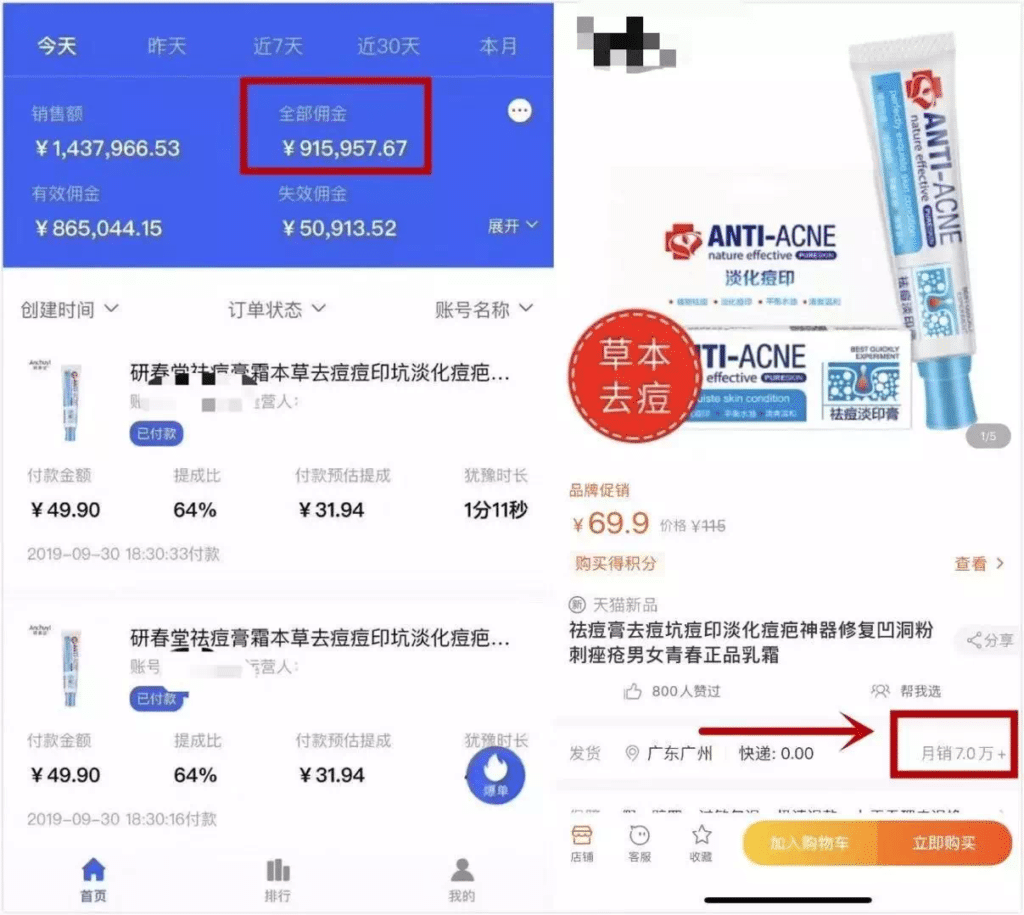
The technique used? Simply a powerpoint slideshow showing the benefits of the product. With days, many other brands started to use a similar strategy to promote their own products.
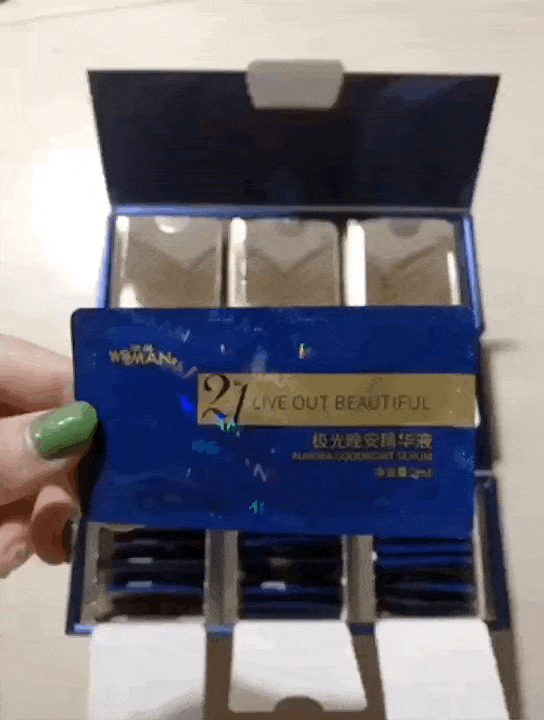

These imitators thought they had found a “magic tactic” enabling massive sales on Douyin. In fact, none of the copycats managed to replicate the initial success.
The reason for their failure is simple: success on Douyin is extremely random.
The randomness of success on Douyin
Douyin is heavily driven by its algorithm in order to drive traffic. This means that small accounts might get a very large amount of traffic if one of their posts get viral, while some of the largest accounts might get insignificant visibility on less popular posts.
If we look at the top-10 selling KOLs on Douyin (data from the 28th of October collected from the platform feigua.cn), we can see that 4 of the KOLs in the top-10 have about 200k followers or less.
Only one KOL with more than 10M followers made it in the top10.
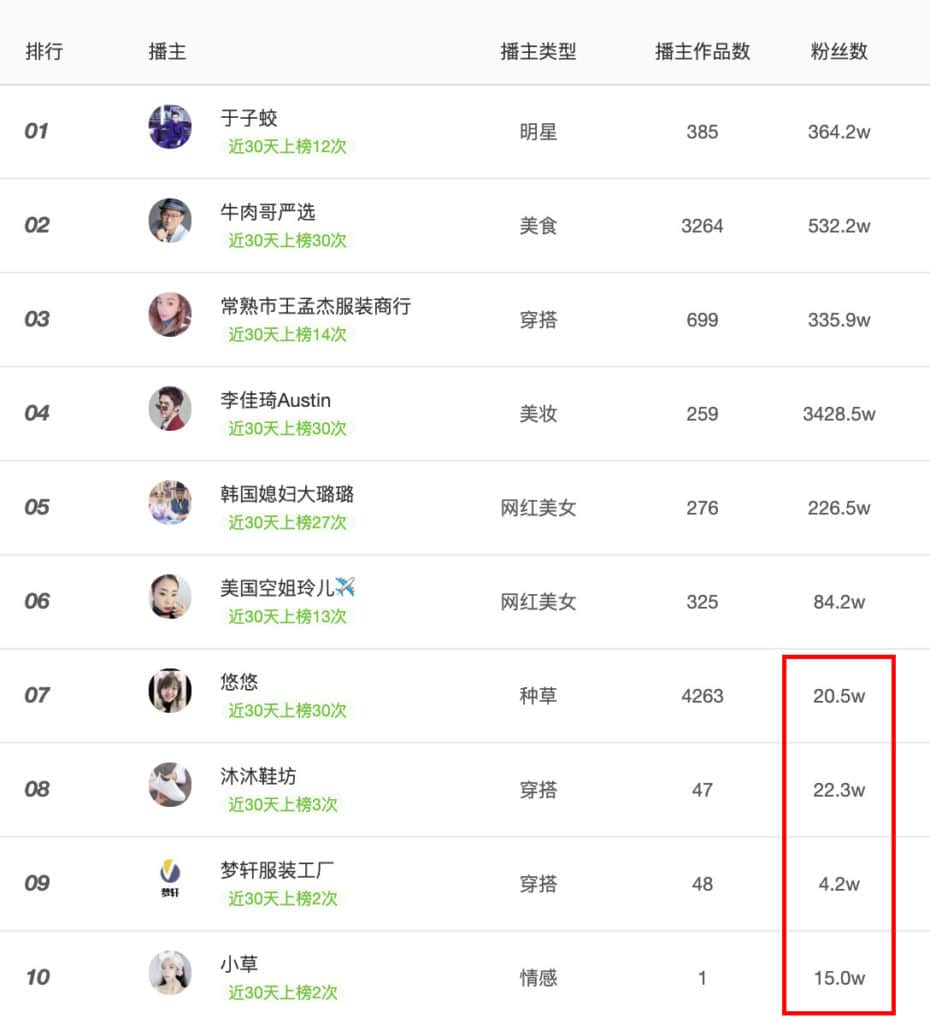
Moreover, taking a closer look at these influencers shows that some of them are one-hit wonders who sometimes only posted once on their entire account (but still managed to gather thousands of likes).
The No. 10 top-selling KOL in the above list only has 2 videos listed: one with 23 likes and one with more than 50,000 likes. This second video obviously went viral, generating an impressive amount of affiliate sales (the product was sold more than 46,000 times in 30 days)
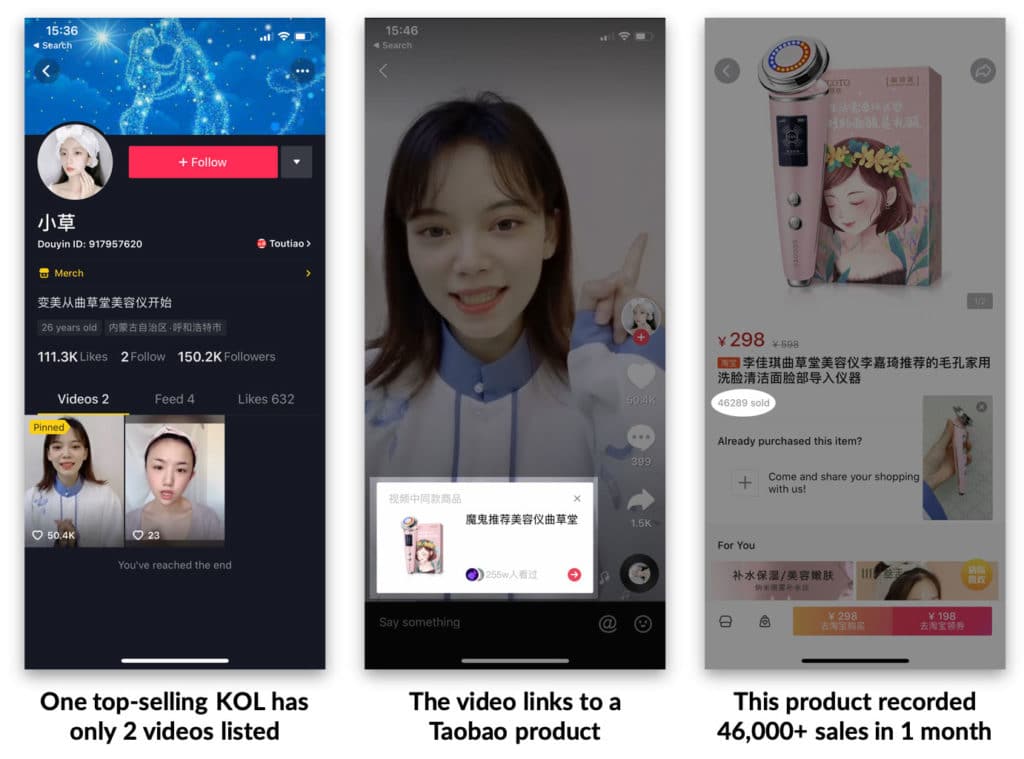
What does it teach us about marketing on Douyin?
We can learn a few things about marketing on Douyin from these findings:
- Create a lot of content: marketing on Douyin is much about getting lucky on a viral video. Quantity is therefore just as important as quality on the platform
- Work with a lot of small to medium size influencers: instead of aiming for the largest and most expensive influencers, brands can work with many small influencers, hoping one of the posts to go viral. This strategy will generally bring higher ROI than working with a single large influencer
- Select influencers carefully: because exposure can vary widely on Douyin, don’t collaborate with an influencer simply because one of their posts featuring your products got viral. Instead, aim for influencers who manage to maintain a consistent amount of engagement post after post.
- Gift products to influencers: because you want to increase the number of influencers talking about your brand (no matter their size), gifting products are particularly effective. It is an inexpensive strategy to get exposure, and small influencers are very likely to display your products. Although without paying KOL via the Douyin system, KOL won’t be able to include a purchasing link in their video
These suggestions might seem common-sense. But they are in fact a huge departure from the strategy usually used on WeChat.
How can brands use Douyin for marketing?
Close ties with KOLs (key opinion leaders) contribute hugely to the exponential growth of Douyin’s popularity. In fact, Douyin has contracts with hundreds of KOLs to ensure that their promotional content goes through the official channels with required fees.

Although direct partnerships are much more expensive, it is a way to ensure visibility of the campaign, which would stand a better chance to go viral. Without working with the platform, sponsored content that bypass this official “agency” can get taken down or find it challenging to achieve viral success.
There are several ways to run a campaign on Douyin. Let’s take a look at some examples:
1. Michael Khors – Hashtag challenge
The American fashion label is Douyin’s first partnership with a luxury brand. In addition to hiring 3 fashion influencers (抖音达人) to appear at an event with the brand’s ambassadors, which include Yang Mi and Mark Chao, the Douyin “in-house” KOLs, who have a collective follower base of 4 million, promoted a “City catwalk” hashtag challenge by sharing videos of them doing a catwalk with Michael Khors products.
A challenge, as it suggests, invites users to complete for the most popular video. It is estimated that the trio’s clips were streamed for over 5 million times, with 30,000 users posting their own 15-second catwalk videos using the hashtag.
Buying these campaigns directly from the platform is not strictly necessary. Going directly to the influencers is significantly cheaper, although growth would then rely purely on organic reach.
Douyin campaigns end up costing somewhere in-between a WeChat and Weibo campaign. Spending 100,000 RMB on a WeChat campaign will get you 105,000 impressions on WeChat, 4,400,000 on Weibo and 600,000 on Douyin according to Parklu’s KOL budget calculator.
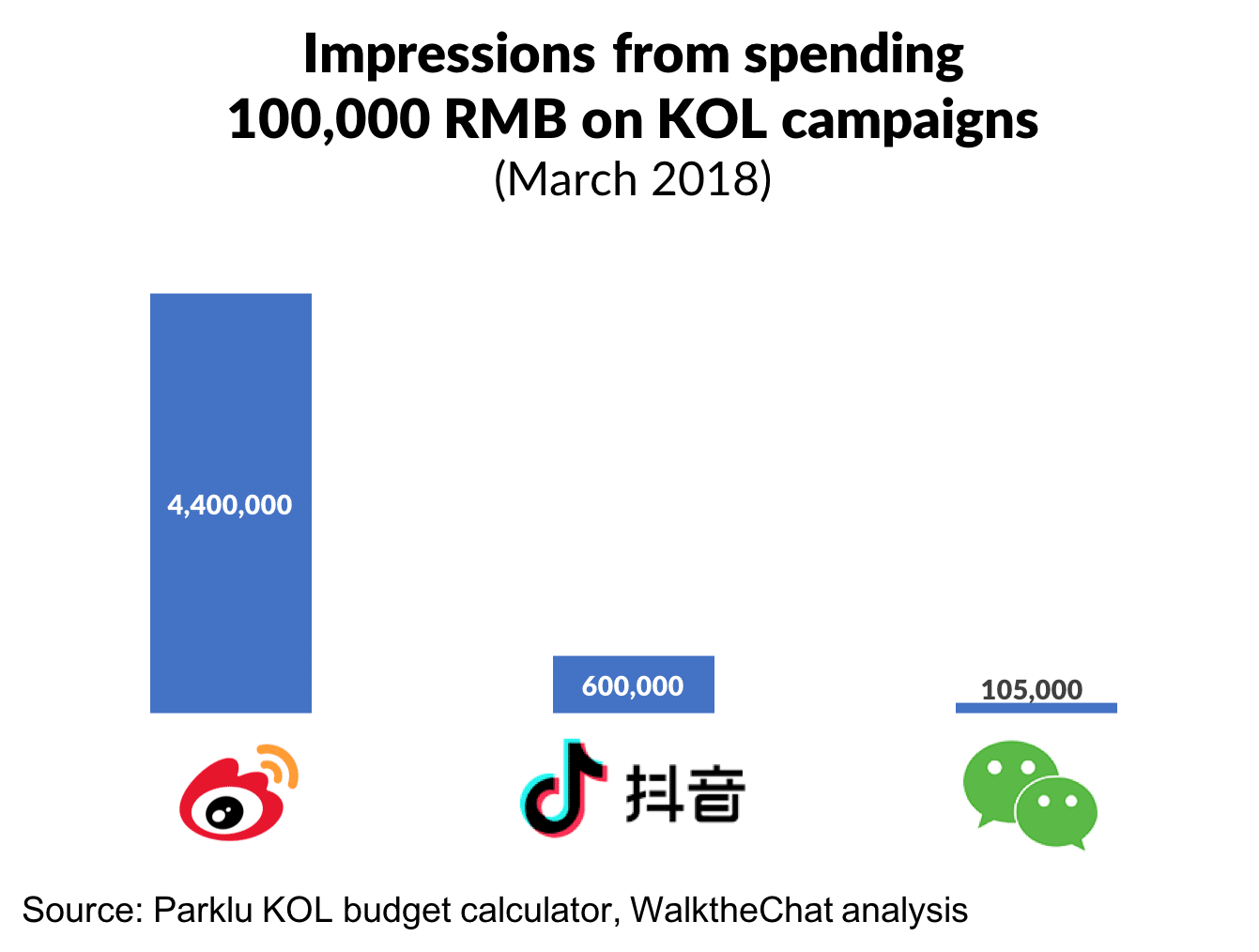
2. Haidilao Hot Pot Customer-broadcasted in-store activities
One of the most innovative F&B challenges on Douyin, which features innovative call-to-actions.
At a Haidilao restaurant, users can request a DIY Douyin recipe , and the staff would know to let you “style” your hot pot yourselves. allowing users to show off their individual dining shows.
As of April, about 15,000 Douyin users participated and about 2,000 short videos have been posted, some by food and lifestyle KOLs who took a keen interest, with some 50 million video views.
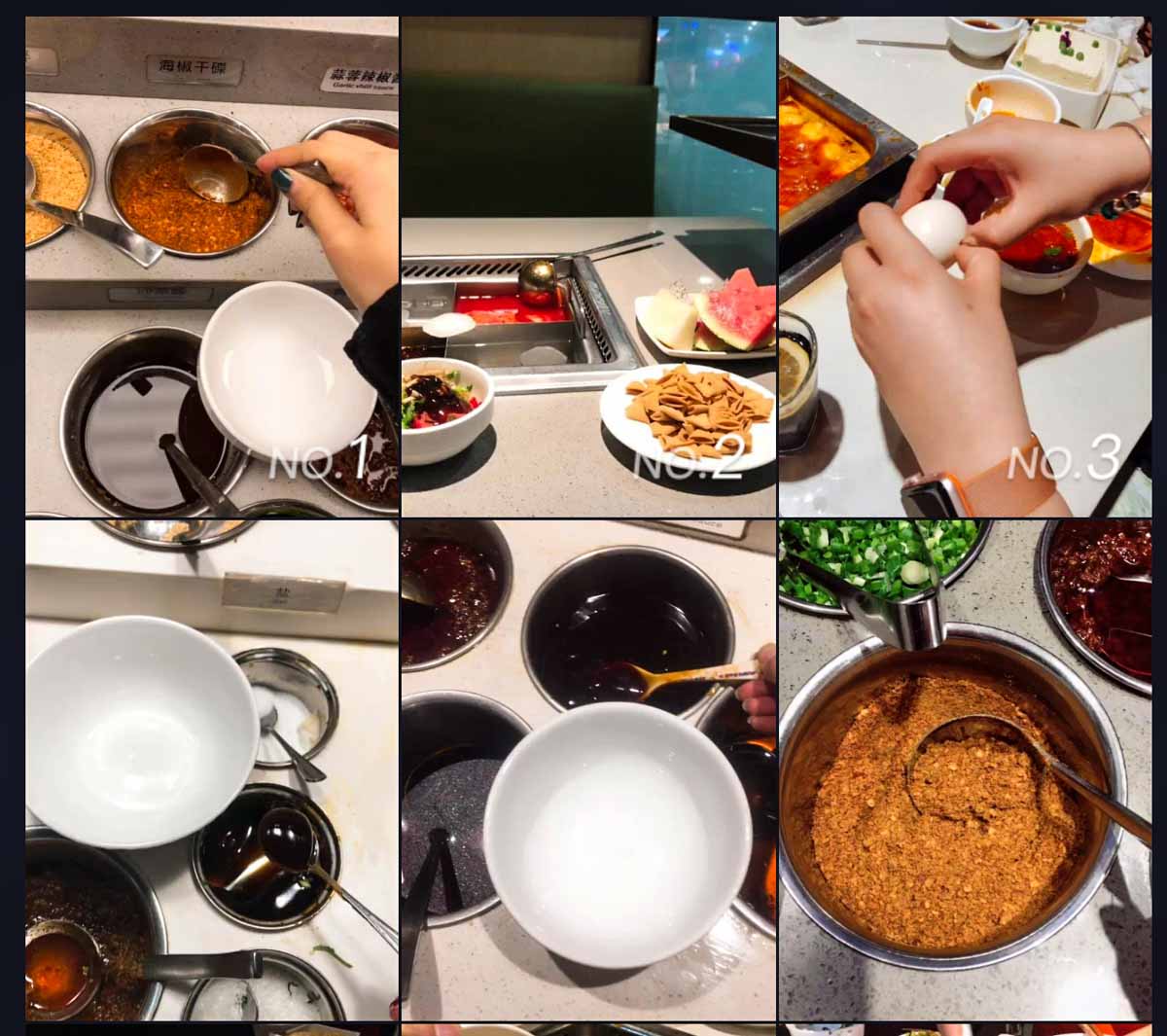
As more users come in to request their Douyin recipe, the campaign turns online engagements into offline customers.
3. Answer Tea: more offline engagement
Answer Tea’s campaign involves a special packaging design. Users can send their orders along with a question. Ask anything (Will I get rich this year? Do you think I am beautiful?) and the answer will be revealed as they open the lid of their cup. It is kind of like a fortune-telling exercise.
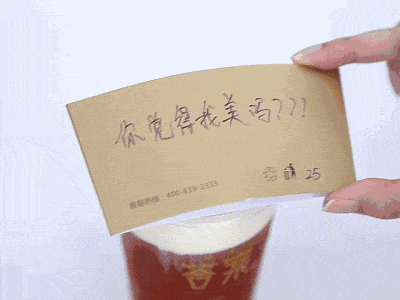
“Shopfront -> Question -> Receipt -> Answer” is typically how a post in this campaign goes. Their Douyin channel has accumulated 345,000 followers, and their 30+ clips have garnered 1.1 million likes. Booming sales aside, the Douyin campaign has driven Answer Tea to sign with 250 franchise partners. Mind you, their first shopfront only opened in January this year.
4. Oreo – In-app ads combined with KOL content
Oreo is one of the mass market brands that went the more “traditional” route, combining in-app banner ads and native in-feed ads with KOL-generated posts. The in-feed ads fit seamlessly inside the video feed, capturing attention without breaking the user’s flow. KOLs are featured participating in the brand’s campaign by sending Oreo-branded New Year greetings to friends.
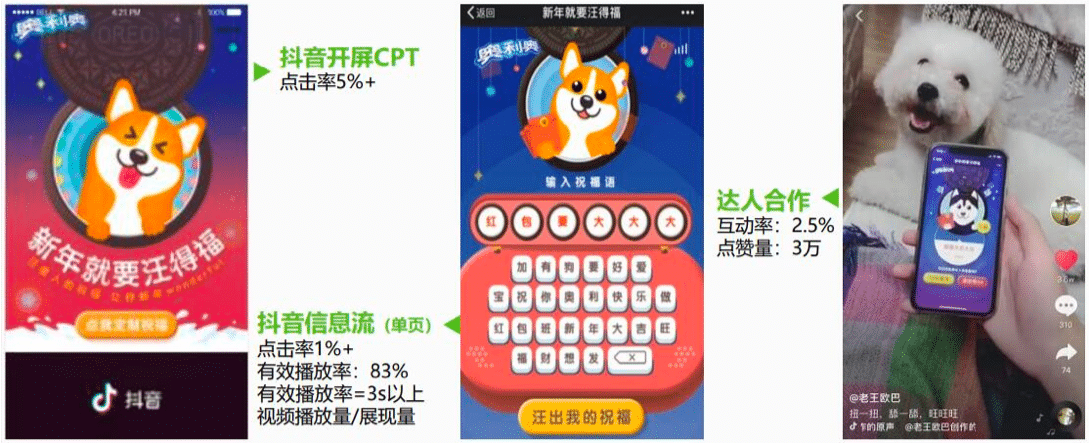
Oreo’s presence on Douyin remains long after the campaign ended. It is worth noting that a user-uploaded video of the making of a strawberry yogurt using Oreo cookie went viral, and has prompted many to post their own dessert making moments, and even to explore more Oreo dessert recipes.
5. Pizza Hut – Custom stickers
Brand-sponsored animated stickers are a great way to engage millions of content-creating users daily. Pizza Hut’s recent campaign features such on-brand motifs as the iconic red hat, sunglasses and their shopfront as stickers for user to accessorise their clips with.
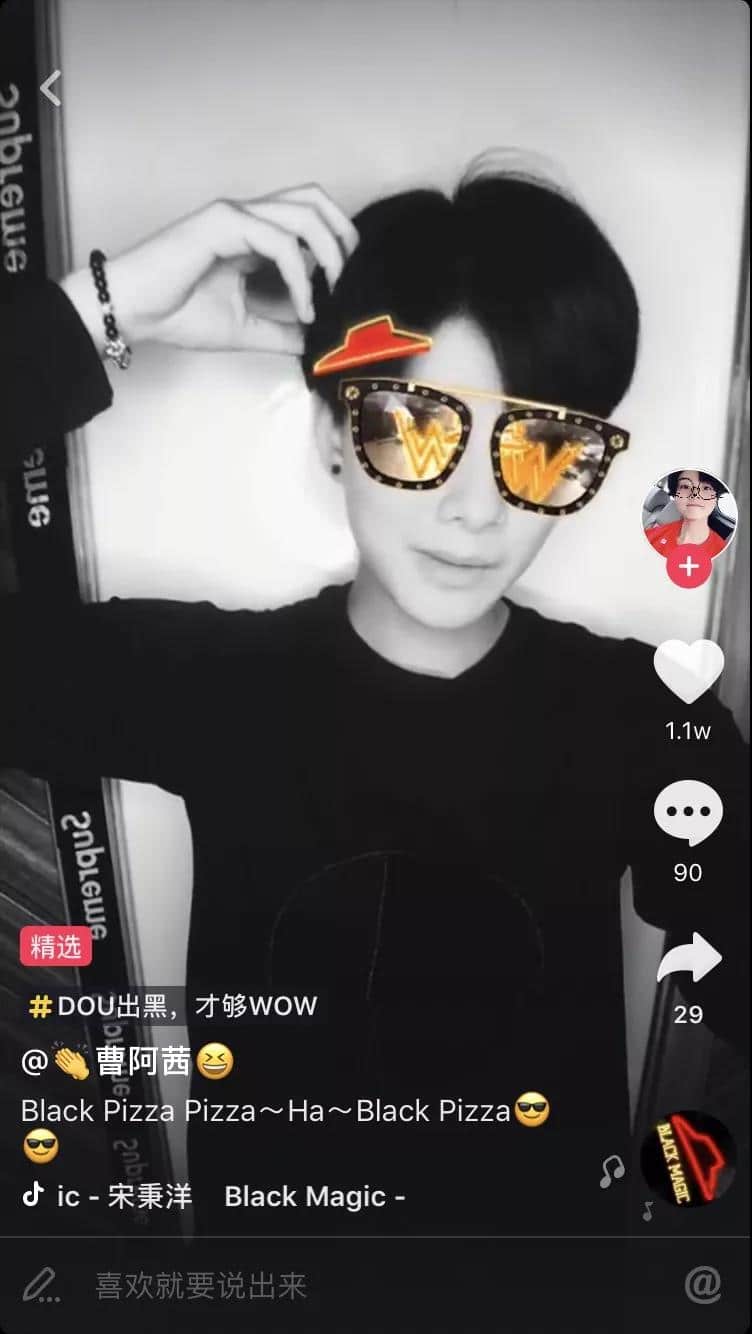
According to Shichangbu, the videos featuring Pizza Hut’s stickers were streamed for over 1 million times.
6. Adidas Neo – Authentic content crafted specifically for the platform
It’s been clear that Douyin isn’t just a social network for musical selfies, but it is also a unique opportunity for a brand to visually present its personality.
Douyin works well for Adidas, who it mainly for its sub-brand AdidasNeo that targets a younger audience.
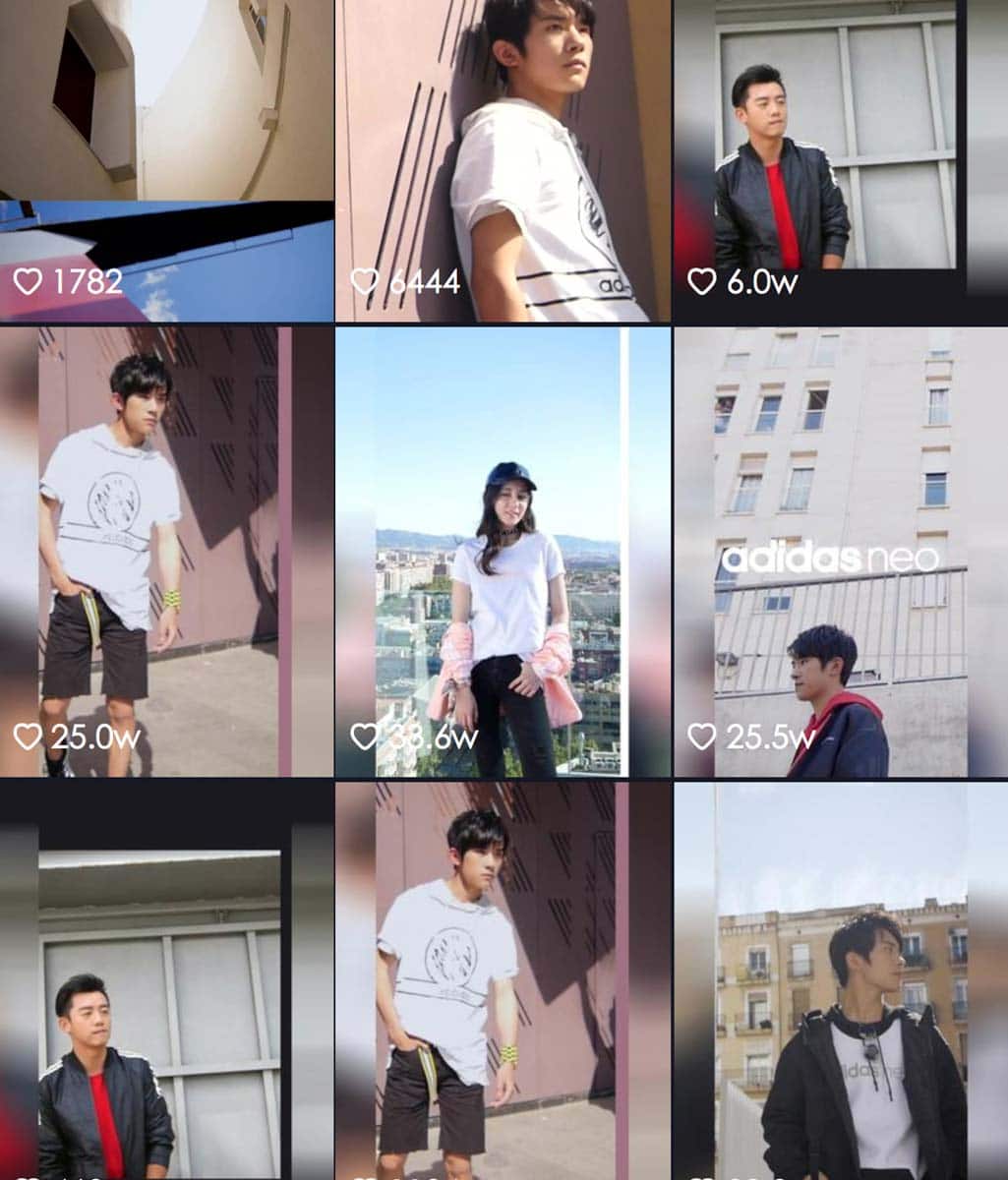
Its Douyin account localizes the brand through generating original content specifically for the platform with local celebrities that embody their target buyer persona. Most of the fashion brand’s posts feature their products in some way, but more as an accessory in the context of the active, stylish lifestyle.
Compared to more mature platforms such as Weibo and WeChat, Douyin’s short-video formats allows more room for playful creativity to condense a brand’s essence.
If you want to learn more about Douyin Advertising, here is the step-to-step guide that you don’t want to miss.
How to market on WeChat compared to Douyin?
WeChat is the opposite of Douyin when it comes to exposure: posts appear chronologically in the user timeline. The algorithm of WeChat doesn’t influence exposure heavily. Instead, the amount of exposure is decided by the account’s initial following and the amount of reshares.
Therefore, creating a lot of content on a brand new WeChat account is not necessarily useful (as it is very unlikely that articles will go viral).
Instead, brands should grow their following via campaigns (engagement campaigns, ad campaigns, KOL campaigns) and then create high-quality content to keep this following engaged.
WeChat marketing advice would therefore be:
- Focus on quality over quantity: unfollow rates are very high on WeChat, especially for service accounts, and maintaining your follower base can be challenging
- Work with influencers with proven ROI: it is very unlikely the KOL posts promoting your brand will go viral. It is, therefore, preferable to work with influencers who can provide a consistent number of real views, with a high level of engagement and proven ROI. A good WeChat KOL can generate a consistent ROI over and over.
- Use content for engagement instead of explosive growth: the content you post on your WeChat Official Account will likely not get viral, but it’s an essential way to engage with your brand’s followers and generate repeat-purchases.
How do other platforms work?
Other platforms in China fall somewhere in the spectrum between WeChat and Douyin.
The social e-commerce platform Xiaohongshu is much closer to Douyin. For instance, a Xiaohongshu influencer called “Cathy Speaks English” managed to triple her followers from 50k to 150k simply by posting a viral video of pronouncing French brands.
She later repeated this strategy for Italian brands, American brands, and lipsticks. But once again, we can see the unreliable nature of Little Red Book: these new videos received from 2k to 42k likes on the platform.
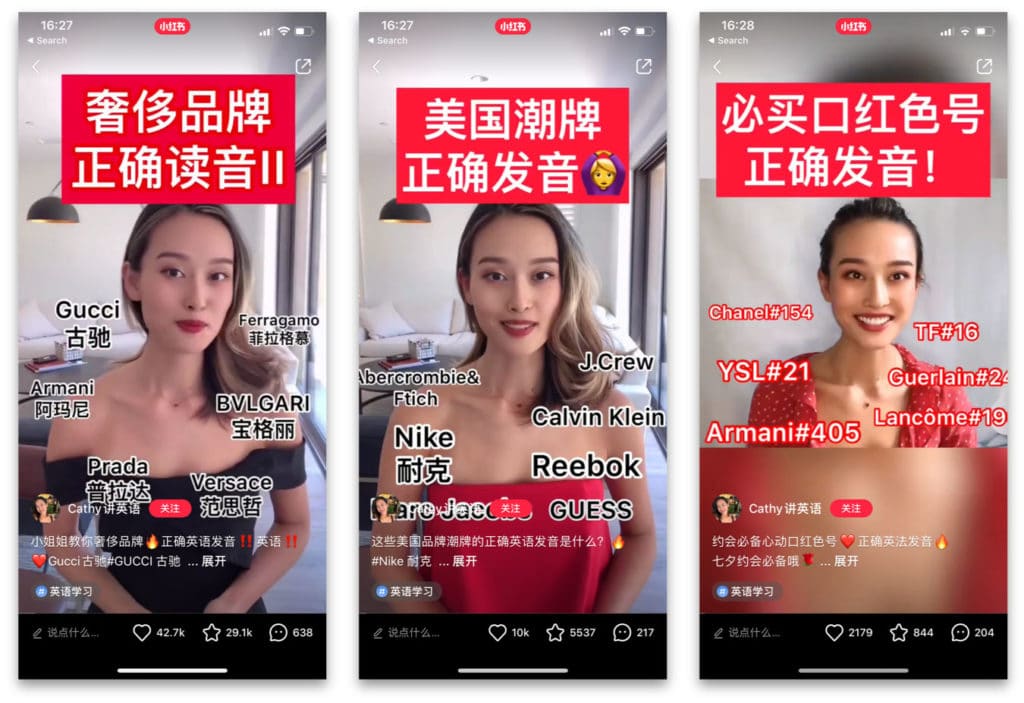
Weibo sits somewhere in between WeChat and Douyin, with a timeline which is partly chronological, partly algorithmic (quite similar to the current Facebook timeline in this respect)
Conclusion
It is no longer possible for brands to ignore newer social networks such as Xiaohongshu and Douyin. And different social networks call for different strategies.
If your WeChat strategy should focus on identifying a few reliable KOLs to drive sales and ROI, your Douyin and Xiaohongshu strategies are more likely to include a large number of small influencers who might drive viral exposure.
It is the combination of these strategies which will enable your brand to stand out and generate sustainable growth in the Chinese digital ecosystem.


